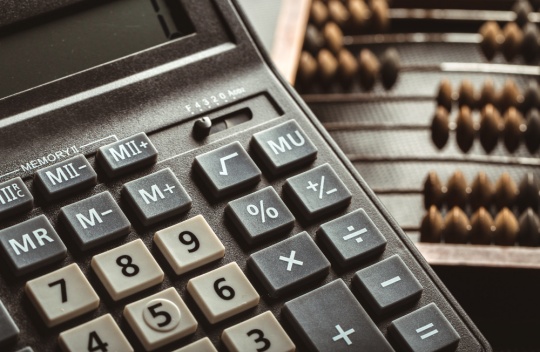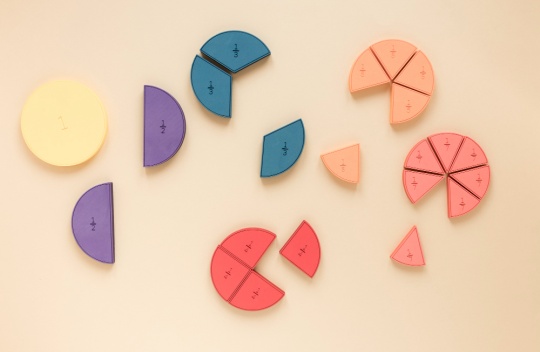
The question of who invented the calculator doesn't have a simple answer, as this revolutionary device evolved through centuries of mathematical innovation. From ancient counting tools to modern electronic devices, the calculator's development represents humanity's persistent quest to simplify mathematical calculations [1].
Who Invented the Calculator - The Early Foundations
The history of the calculator begins with primitive counting tools used by ancient civilizations. Before written numbers existed, humans relied on fingers, toes, pebbles, and bones for basic calculations. The abacus, developed by Sumerians and Egyptians before 2000 BC, marked the first significant advancement in calculation technology and remains in use in some parts of the world today [1].
The Mechanical Revolution
The first true mechanical calculator emerged in 1623 when Wilhelm Schickard created his "Calculating Clock." This groundbreaking device featured a multiplying mechanism, intermediate result storage, and a six-digit decimal adding system [2]. Schickard's invention marked the beginning of mechanical calculation, though its existence wasn't widely known until centuries later [3].
In 1642, Blaise Pascal developed the Pascaline, a remarkable mechanical calculator that could perform addition and subtraction directly. Pascal's device was particularly notable for its innovative carry mechanism, which allowed digits to cascade independently when carrying numbers. After creating 50 prototypes, he presented the final version in 1645, selling about twenty machines during his lifetime [4].
In 1673, Gottfried Wilhelm Leibniz improved upon Pascal's design by creating a machine capable of performing all four arithmetic operations: addition, subtraction, multiplication, and division. Leibniz's Stepped Reckoner introduced the stepped drum mechanism, a cylindrical gear with teeth of varying lengths that allowed for more complex calculations. This innovation would influence calculator designs for centuries to come.
The Industrial Age Advancement
The 19th century saw further advancements in mechanical calculator technology. In 1820, Charles Xavier Thomas de Colmar invented the Arithmometer, which became the first commercially successful mechanical calculator. This device could perform all four basic arithmetic operations and remained the only commercially available calculator worldwide from 1878 to 1887 [2].
In 1887, Dorr E. Felt patented the Comptometer, a key-driven mechanical calculator that became widely used in business and finance. The Comptometer's design allowed for faster data entry and calculations, significantly improving efficiency in accounting and bookkeeping tasks. This invention marked a crucial step in the evolution of calculators from purely scientific tools to practical devices for everyday business use [2].
The early 20th century saw further refinements in mechanical calculator technology. In 1921, Edith Clarke, a pioneering woman in electrical engineering, invented the "Clarke calculator." This specialized device was designed for solving line equations involving hyperbolic functions, which were particularly useful in electrical engineering calculations. Clarke's invention demonstrated the growing need for specialized computational tools in various scientific fields and highlighted the contributions of women to calculator technology. [1]
The Electronic Revolution
During World War II, the demand for complex calculations in ballistics, code-breaking, and other military applications led to significant advancements in computing technology. While not strictly calculators, devices like the ENIAC (Electronic Numerical Integrator and Computer), completed in 1945, represented a leap forward in electronic computation. These early computers, although massive and expensive, paved the way for the miniaturization and widespread adoption of electronic calculators in the following decades.
The post-war period saw the transition from mechanical to electronic calculators. In 1954, IBM introduced the IBM 608, the first all-transistor calculator. This machine could perform 4,500 additions per second, a remarkable feat at the time [2][6]. The use of transistors instead of vacuum tubes marked a significant step towards more compact and reliable computing devices.
The 1960s brought about a revolution in calculator technology with the development of integrated circuits. In 1964, Friden introduced the EC-130, one of the first all-electronic desktop calculators. While still large by today's standards, it was significantly smaller than its predecessors and could perform complex calculations much faster.
These Industrial Age advancements set the stage for the electronic revolution that would follow. The progression from mechanical to electronic calculators reflected broader trends in technology and industry during this period. Each innovation built upon previous developments, gradually transforming calculators from specialized tools used by scientists and engineers into devices that would soon become accessible to the general public.
The Handheld Revolution
The breakthrough achieved by those who invented the calculator paved the way for more compact and efficient devices, and a new big breakthrough was just around the corner at this point. In 1967, Texas Instruments achieved another milestone by developing the first handheld calculator, codenamed "Cal Tech." This 45-ounce device featured 18 keys and could display up to 12 decimal digits, setting the stage for modern portable calculators [2].
Today's calculators range from basic four-function devices to sophisticated graphing calculators. They serve various specialized purposes:
Scientific Calculators: Designed for complex mathematical operations, including trigonometric functions and logarithms.
Graphing Calculators: Essential tools for advanced mathematics, capable of visualizing equations and performing complex calculations.
Financial Calculators: Specialized devices for financial calculations and business applications.
Legacy and Impact
The calculator's evolution represents one of humanity's most significant technological achievements. From Schickard's mechanical marvel to modern electronic devices, each innovation has contributed to making mathematical calculations more accessible and efficient. Today's calculators continue this legacy, with manufacturers like Texas Instruments remaining at the forefront of educational technology [5].
The story of who invented the calculator is really a story of continuous innovation and improvement. Each inventor built upon previous achievements, creating increasingly sophisticated tools that have transformed how we approach mathematical calculations. This evolution continues today with digital calculators and smartphone applications, making computational power more accessible than ever before.
The calculator's journey from simple counting tools to sophisticated computing devices exemplifies human ingenuity and our constant drive to simplify complex tasks. As we look to the future, calculator technology continues to evolve, adapting to meet new challenges and requirements in education, science, and business [9].
Sources:
[1] https://en.wikipedia.org/wiki/Calculator
[2] https://edtechmagazine.com/k12/article/2012/11/calculating-firsts-visual-history-calculators
[3] https://historycooperative.org/who-invented-the-calculator/
[4] en.wikipedia.org/wiki/Pascal's_calculator
[5] https://education.ti.com/en/
[6] https://mathsciencehistory.com/2024/05/23/the-history-of-calculators/

